Stratigraphic studies
Stratigraphic studies
Stratigraphic studies is one of the standard examination methods that provides very precise information about the complexity of paint layers that make up a painting or decorative finish. It is the key method to assess the extent and condition of different painting layers. Stratigraphic studies can reveal the way the paint layers are applied and consequently, they tell us how the artist worked. Tiny samples of paint are taken from discrete and representative areas and mounted in clear resin. Such prepared samples are observed under a binocular microscope at high magnification between 50x and 200x depending on the thickness of the examined layer.
Thorough observation of the various layers enables the conservator to determine the history of the object and whether interventions have occurred by inspecting layers of dirt, varnish and paint. Additionally the media analysis can be carried out on the cross-sections which provide important information about an artist’s technique, and helps to determine the most appropriate conservation treatments to use. A technique of staining of cross-sections can detect the presence of certain materials in the various painting layers such as lipids (suggesting an oil-containing medium), or proteins (signifying a gum-, casein- or animal glue-based medium).
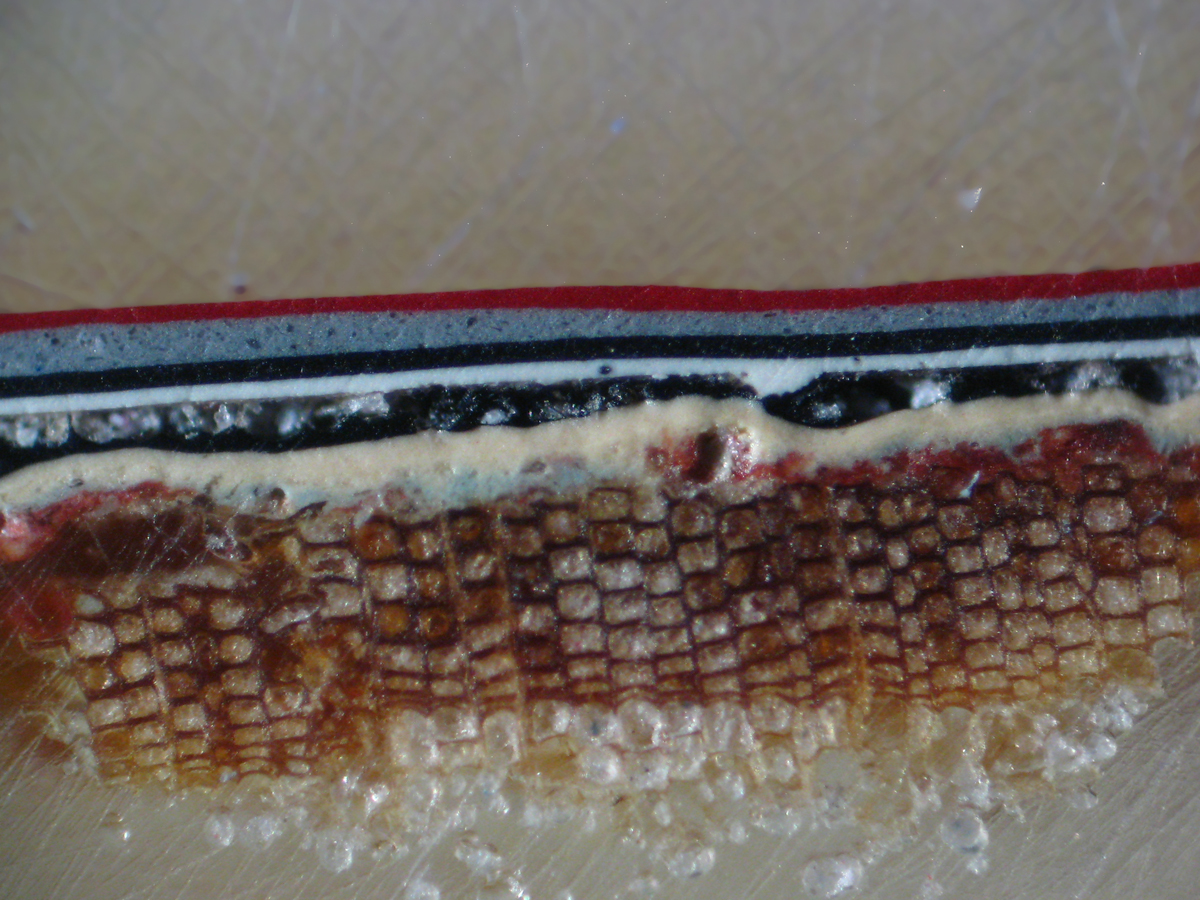
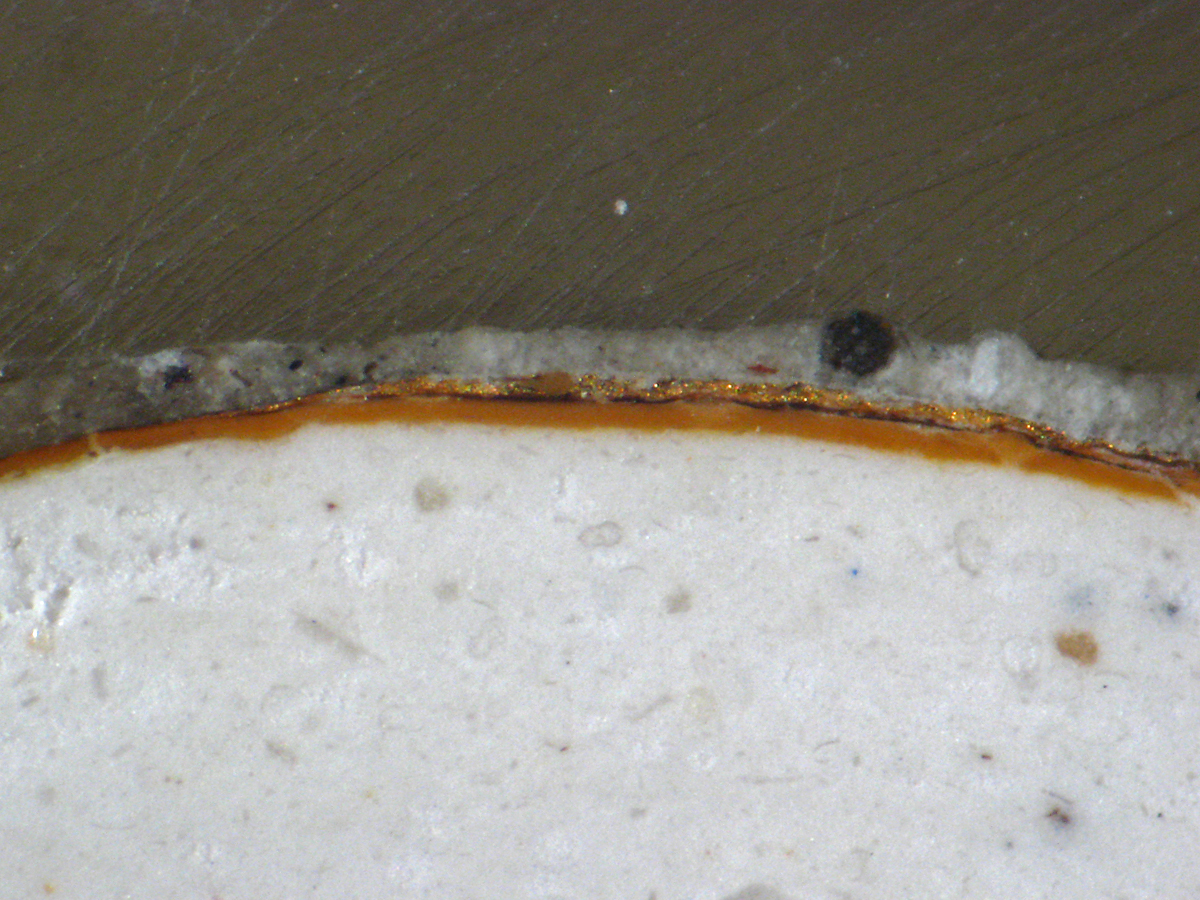
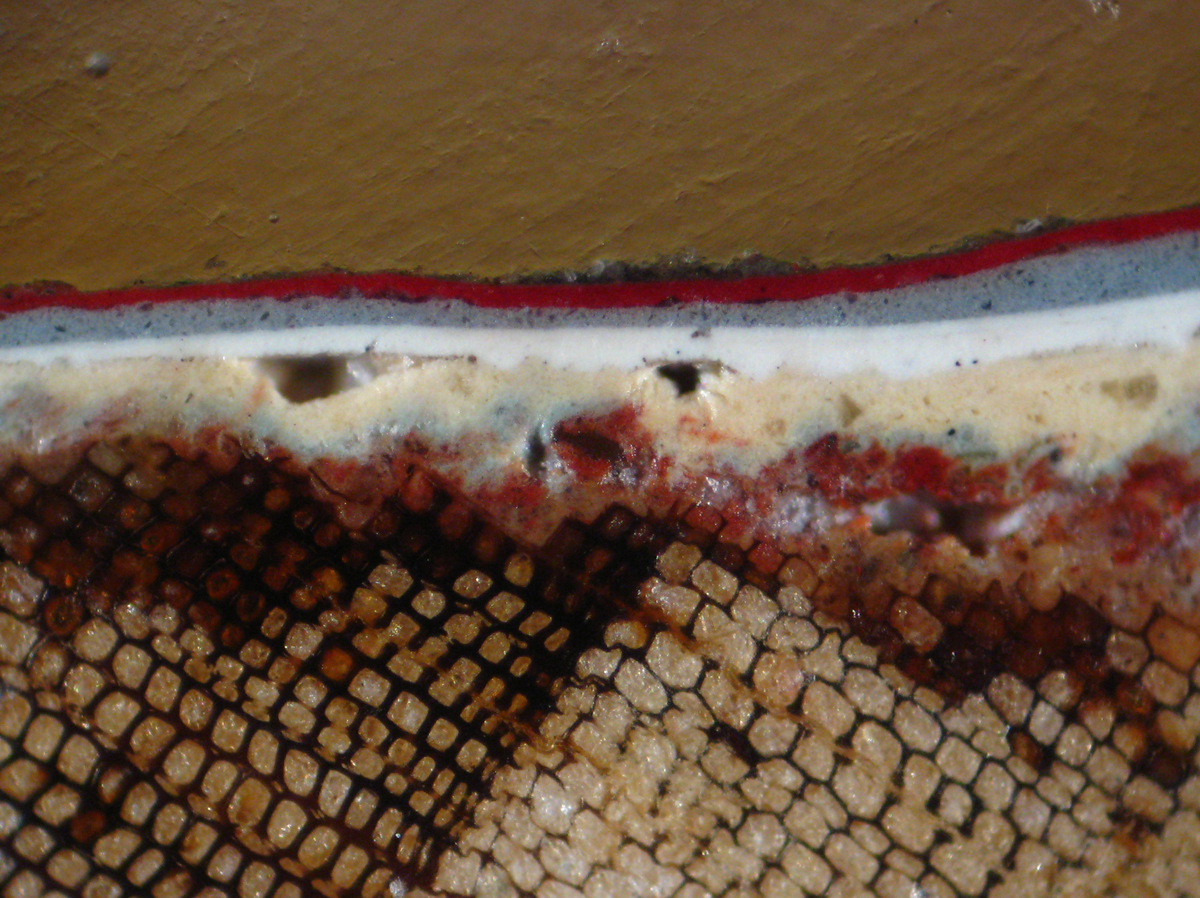
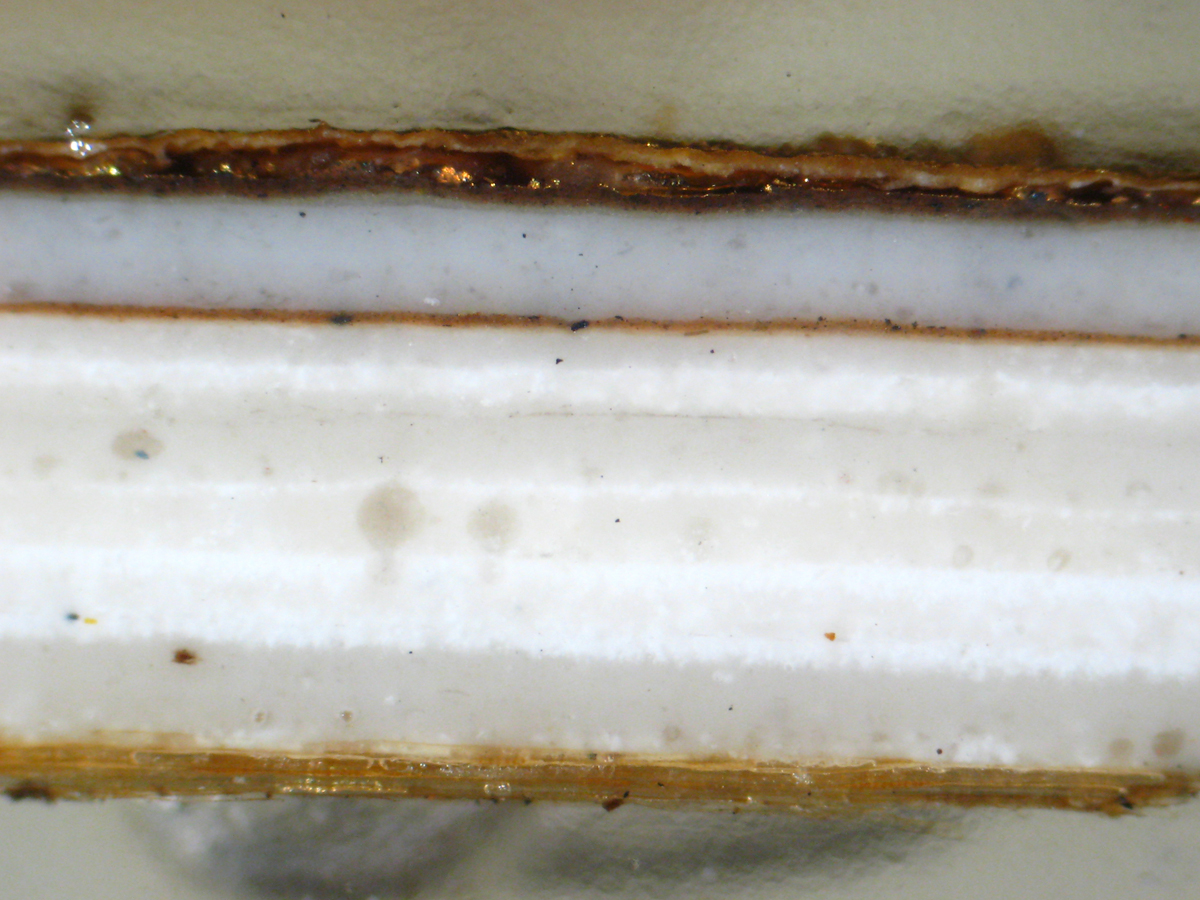
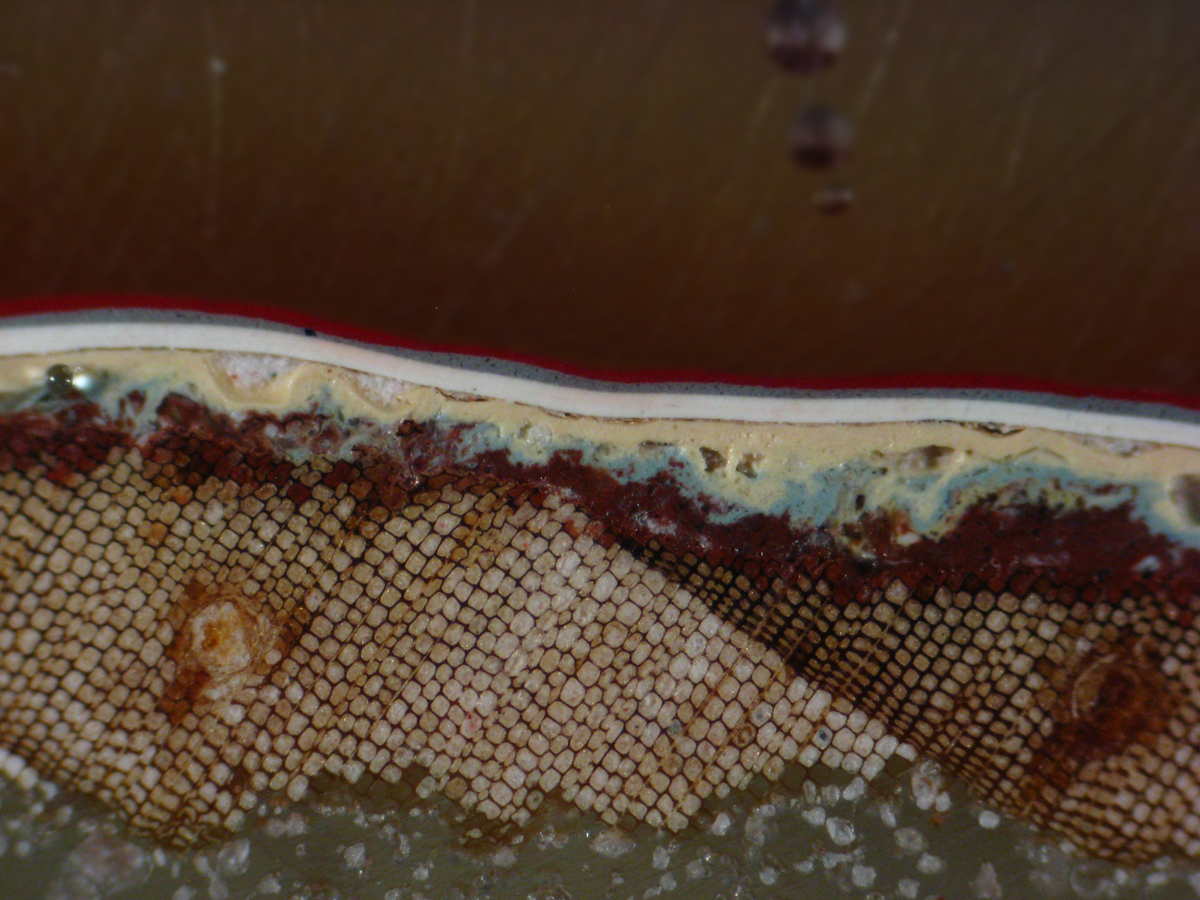
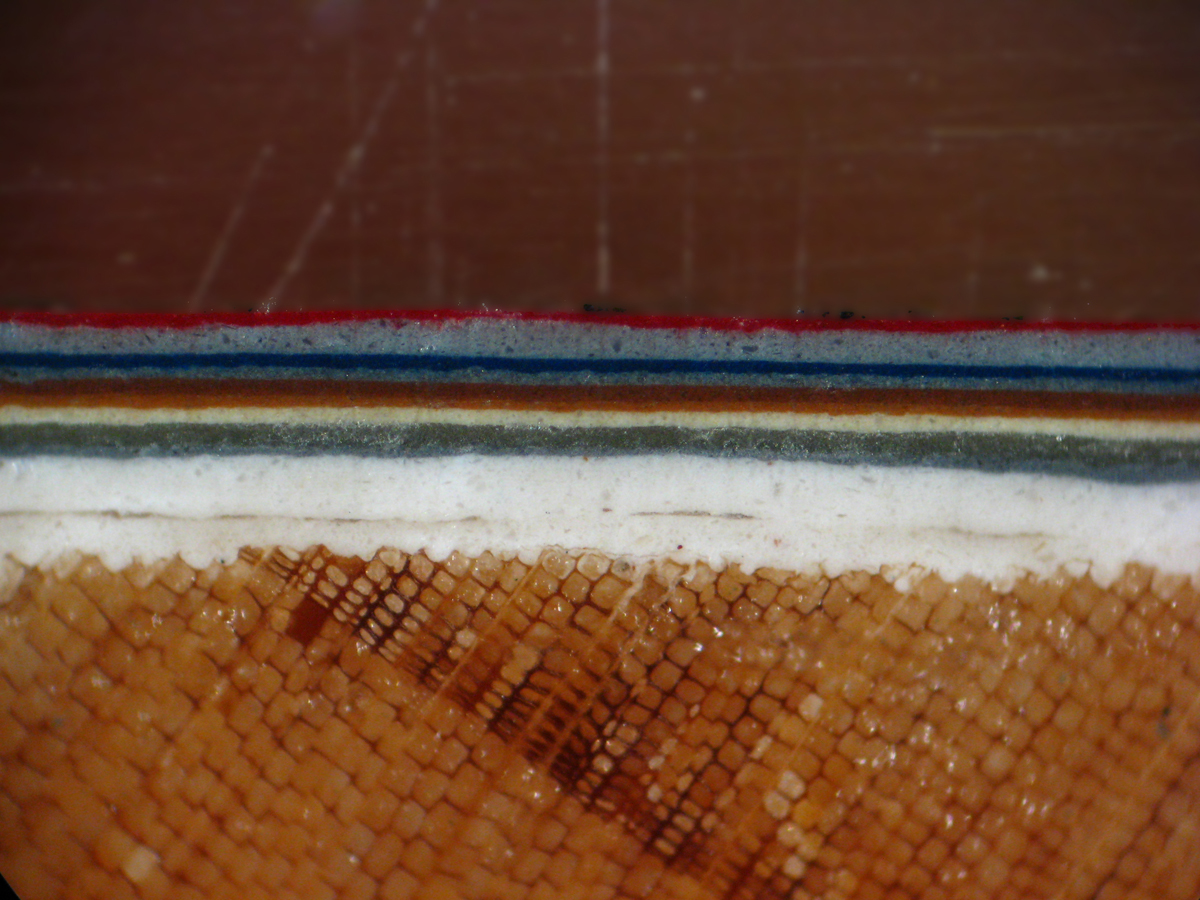
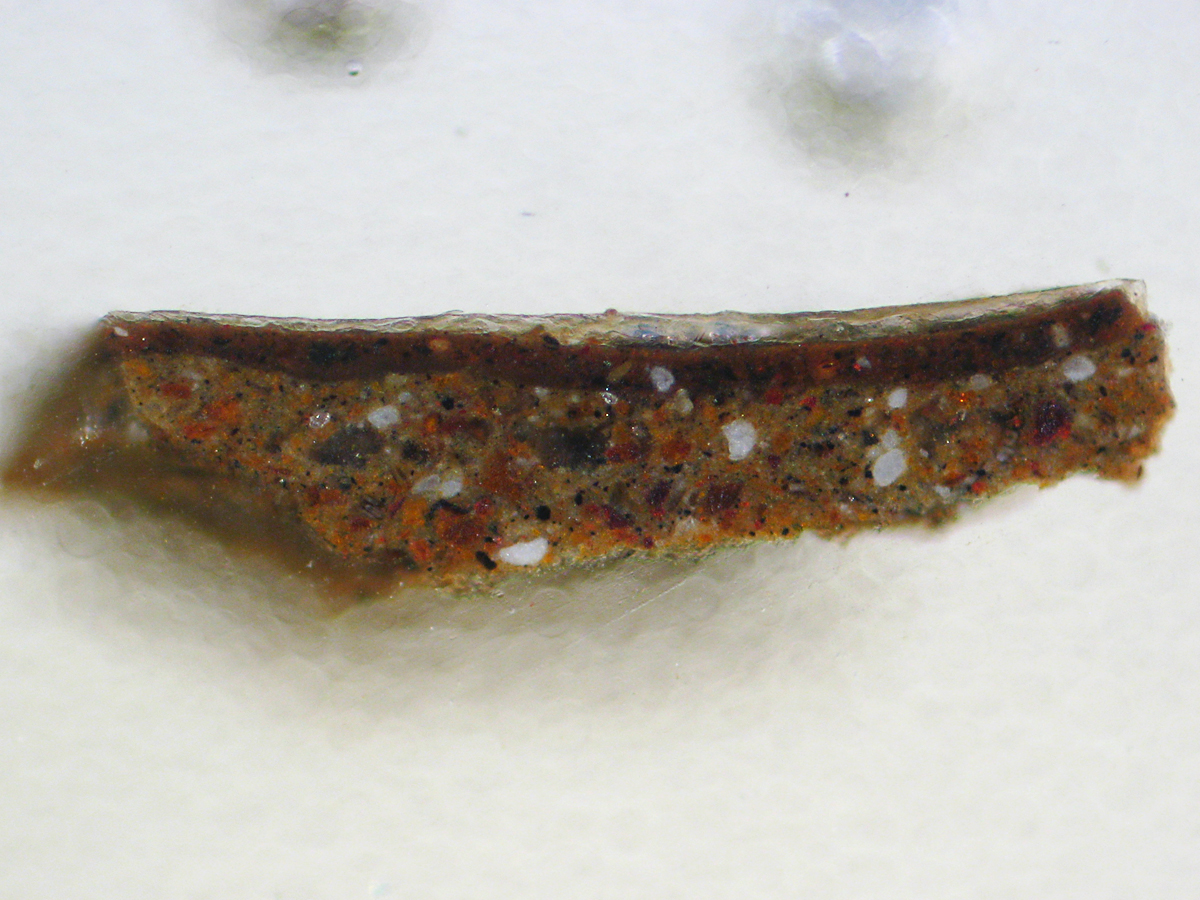
INFO







INFO



